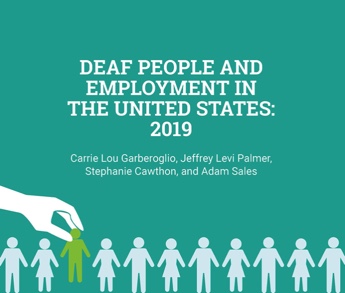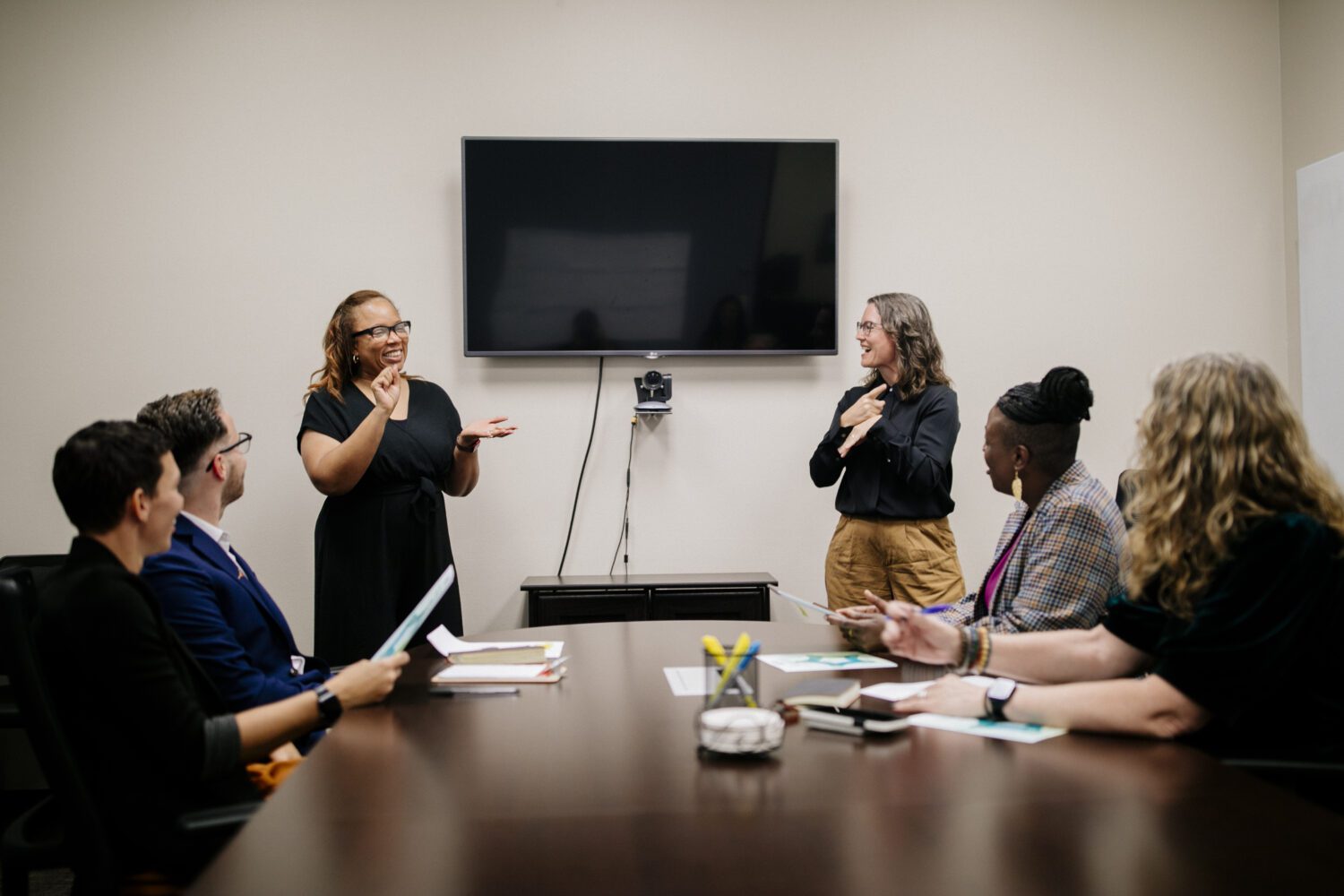Unemployment in the United States recently hit a 49-year low. However, the strong U.S. labor market is passing by millions of deaf Americans.
That is according to Deaf People and Employment in the United States: 2019, a new report published by the National Deaf Center on Postsecondary Outcomes. It finds that significant employment gaps continue to exist between deaf and hearing people, despite improvements in college enrollment and legal access via the Americans with Disabilities Act. Key findings include:
Only 53.3% of deaf people ages 25-64 were employed in 2017, compared to 75.8% of hearing people – an employment gap of 22.5%;
Employment rates have not increased from 2008 to 2017 for deaf Americans, a population that has yet to recover from the recession in 2008;
Deaf people are underrepresented in key job growth sectors such as health care;
Employment and wage gaps get larger when factors such as race, ethnicity, gender, and disability are considered.
Significantly, a whopping 42.9% of deaf people have opted out of the labor force, more than double the rate of hearing people (20.8%). The low labor force participation rate is not due to a lack of interest in employment, because National Deaf Center analysis of unemployment statistics in the report suggests deaf people are more likely than hearing people to be actively looking for work.
“Deaf people are opting out due to a lack of options,” said Stephanie Cawthon, PhD, Director of the National Deaf Center and a co-author of the report. “They are frequently hired to do low-level jobs that lack career development and advancement. They also get burned out facing countless barriers. It takes a lot of energy to navigate a hearing world with few accommodations, considerable challenges, and low expectations.”
Bypassing deeply familiar challenges in the workplace may be why deaf people are also more likely to be self-employed (11.6% vs. 9.8% of hearing people) and business owners (4.1% vs. 3.8%).
Other findings in the 20-page report, which was authored by Carrie Lou Garberoglio, Jeffrey Levi Palmer, Stephanie Cawthon, and Adam Sales:
- Labor force participation rates vary greatly by gender (61.1% of deaf men vs. 50.5% of deaf women), race and ethnicity (59% of deaf Whites vs. 44.8% of deaf African Americans and 43.6% of deaf Native Americans) and in the presence of additional disabilities (only 39% of deafdisabled people were in the labor force vs. 75% of deaf people without an additional disability; in this dataset, 50% of the deaf population had some sort of additional disability);
- Deaf people are more likely to work part-time than hearing people (26.6% vs. 22.6%);
- Employment and wage gaps between deaf and hearing people narrow as educational attainment increases, in particular bachelor’s degrees; and
- Across occupational fields, deaf people are more likely than hearing people to work in manufacturing (15.7% vs. 12.4%), government or military (9.5% vs. 6.5%), and transportation (6.5% vs. 4.9%) and less likely to work in medical (11.2% vs. 13.8%) and finance (5.4% vs 7.8%).
The National Deaf Center is a technical assistance center committed to closing the gaps in education and employment for deaf people in the United States and its territories, particularly as they leave high school and head to college, careers, or training programs. Click here to read data reports on employment, education, and postsecondary achievement.









